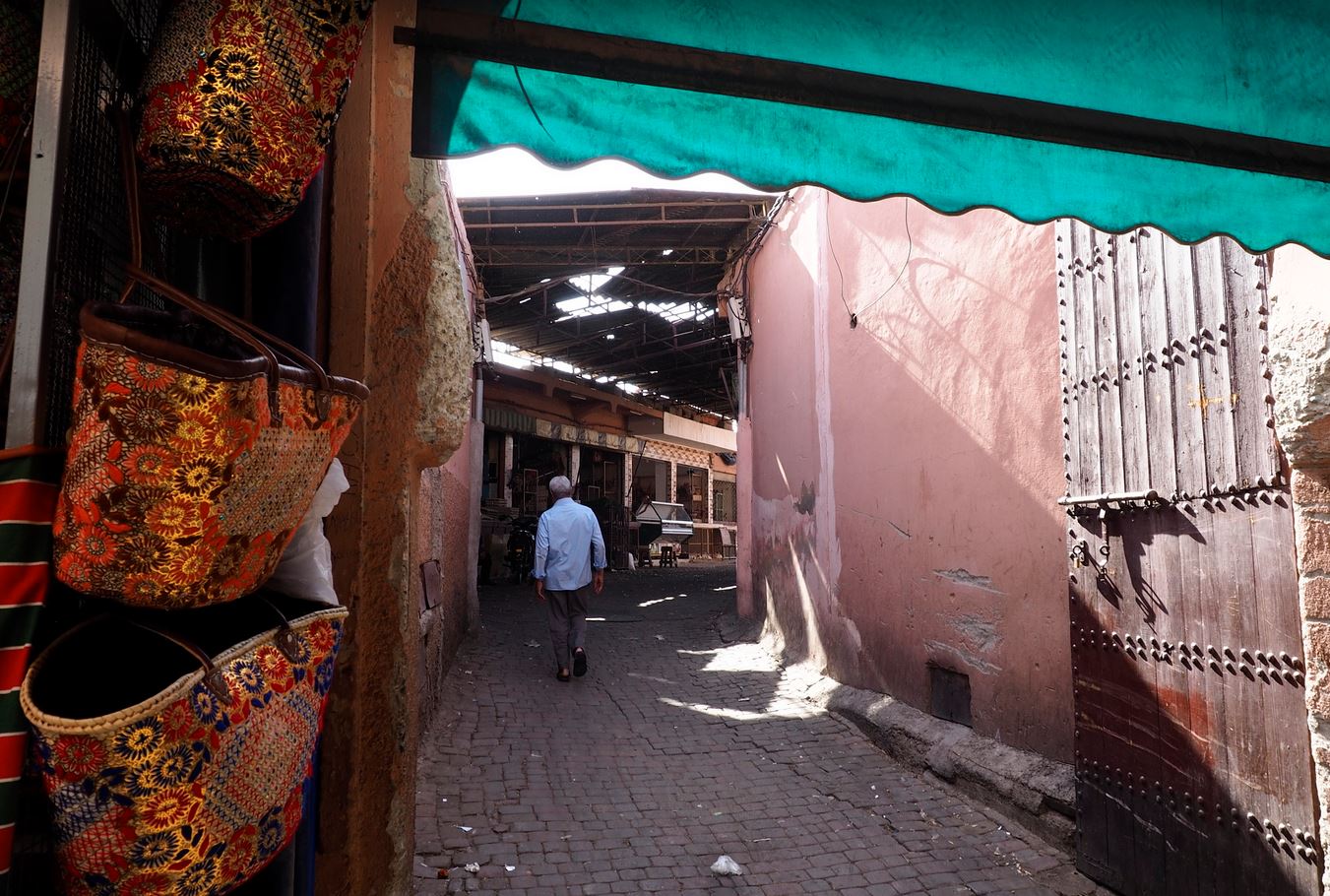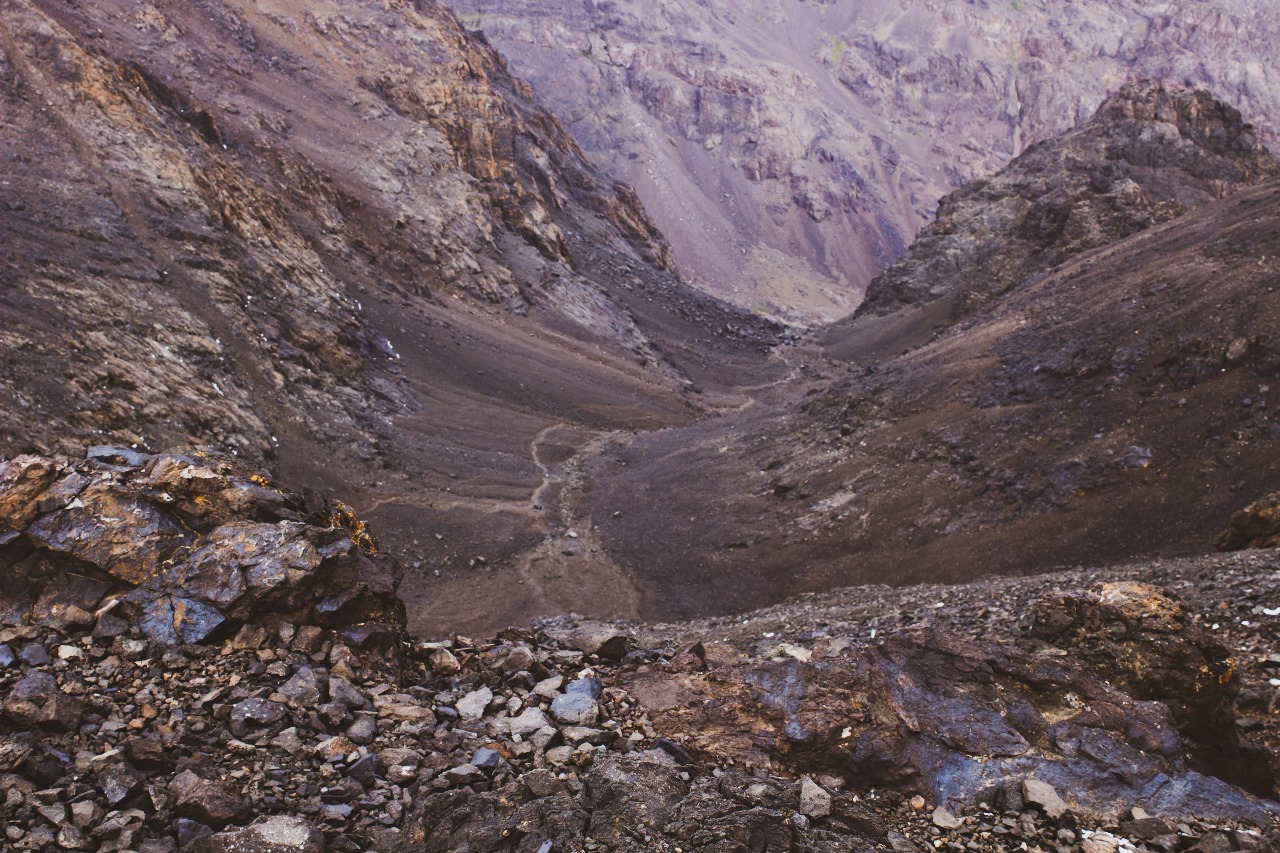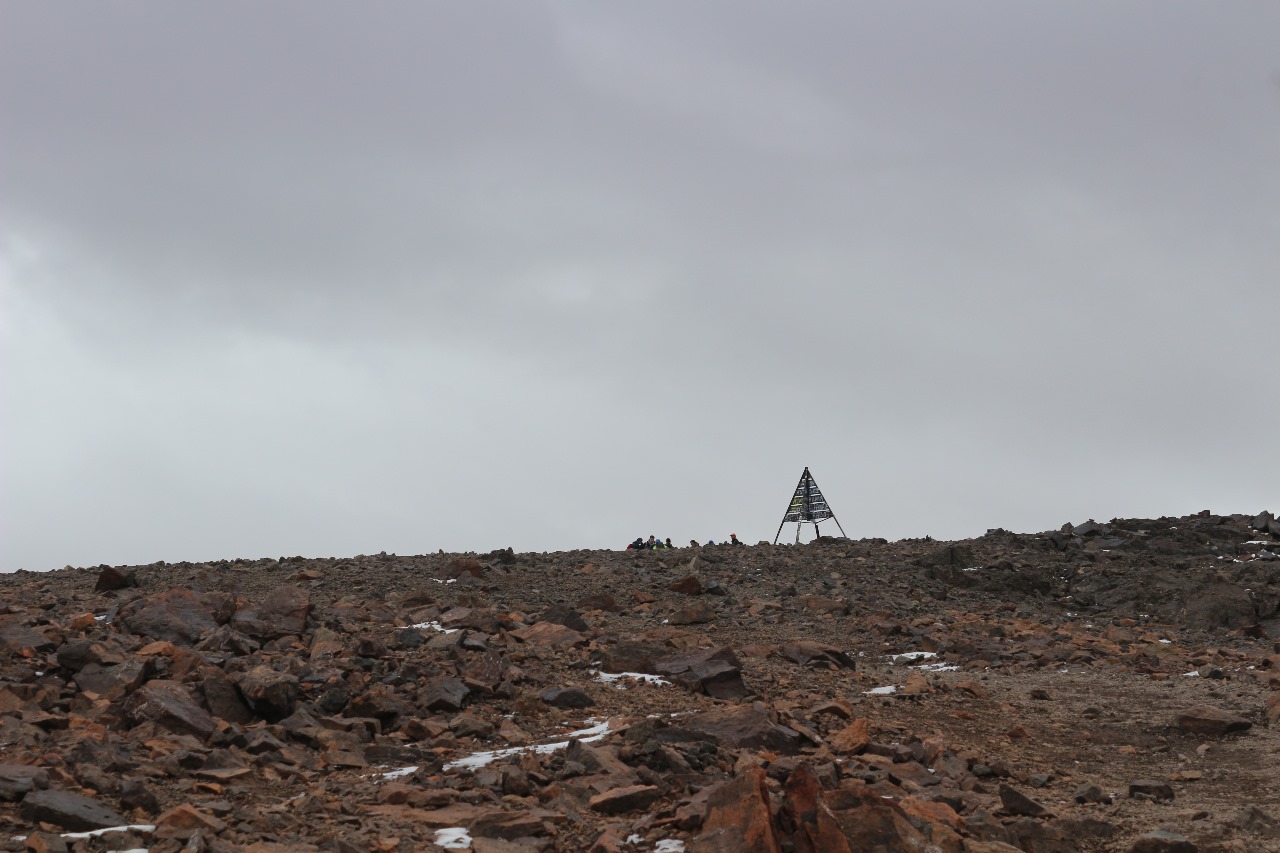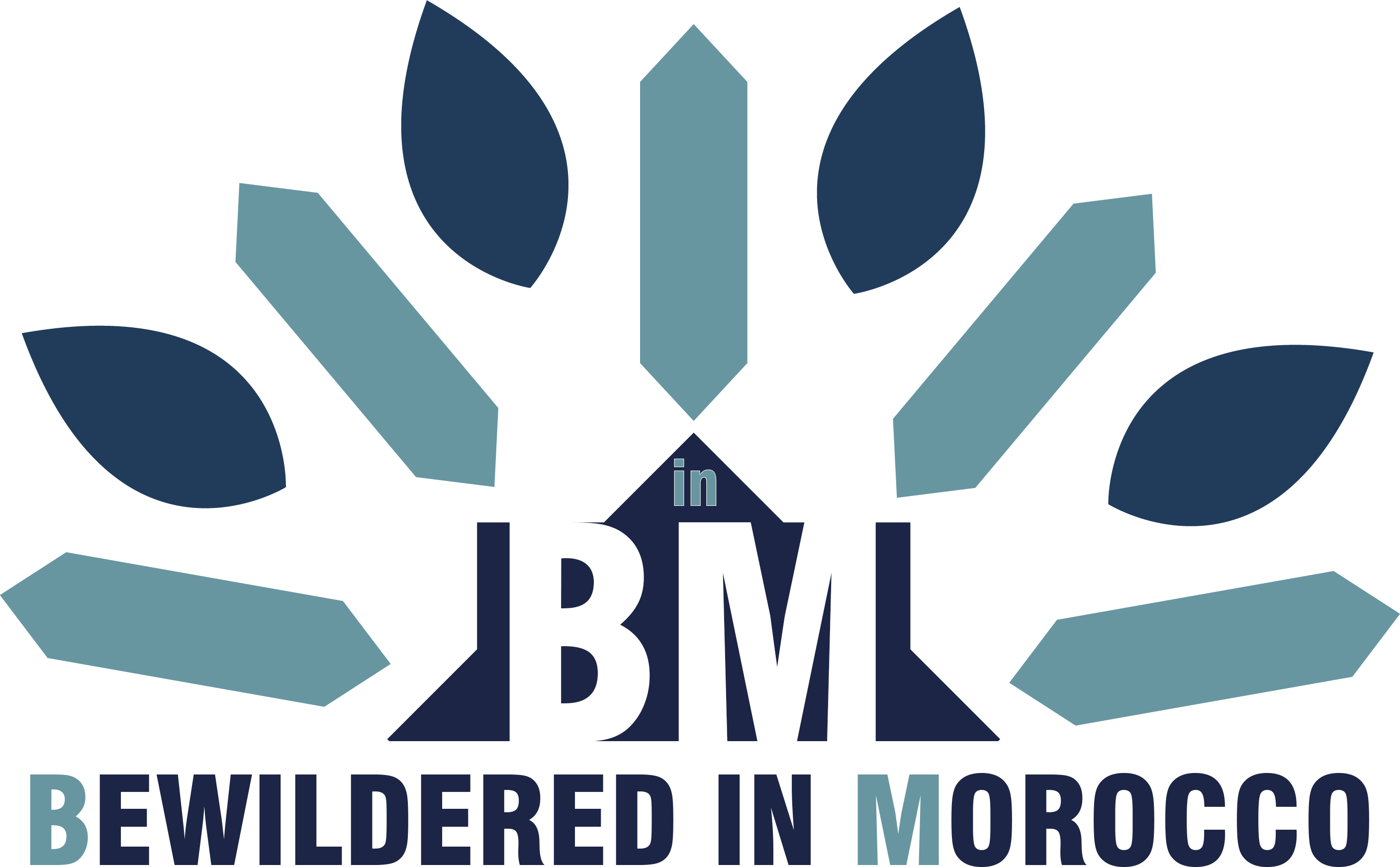Picture this: It's 7 AM in Marrakech, and I'm about to embark on what would become one of my most memorable—and challenging—adventures in Morocco. My goal? To reach the summit of Jebel Toubkal, the highest peak in North Africa and the entire Arab world at 4,167 meters above sea level. What I didn't expect was getting caught in a snowstorm that would turn this Toubkal Atlas Mountains adventure into something far more intense than I'd bargained for!
Setting Off from Marrakech: The Journey Begins

The excitement was building as we left Marrakech in the early morning. I remember thinking, "Finally, we're going to climb the highest peak in the Arab world!" The enthusiasm was through the roof, even though I could barely move my lips from the cold—and we hadn't even started climbing yet!
Our first destination was Imlil, a charming Berber village that serves as the gateway to Toubkal. The drive itself was spectacular, winding through landscapes that seemed to change with every turn. The red earth of Morocco was particularly striking here—everything seemed to have that distinctive terracotta hue that makes the Atlas Mountains so photogenic.
The Magic of Imlil Village

Arriving in Imlil felt like stepping into another world. This beautiful village, sitting at approximately 1,700 meters above sea level, is where most Toubkal expeditions begin. Before starting our trek, we had some important preparations to make.
We packed our gear strategically, separating our main luggage from our mountain essentials. Everything we'd need for the climb went into a smaller "duffel bag"—warm clothes, climbing gear, and all the necessities for high-altitude hiking. The brilliant thing about climbing in Morocco is that local Berber guides organize mule transport to carry your heavy bags to the base camp, so you don't have to carry everything on your back.
And then there was the atay—oh, that sweet Moroccan mint tea! Nothing beats a glass of traditional mint tea before starting a challenging adventure. It's these little moments that make traveling in Morocco so special.
Meeting Our Berber Guide Team

Our expedition wouldn't have been possible without our incredible team of local guides. We had Mohammed, our main guide, plus Said and Hassan—all experienced mountaineers who know these peaks like the back of their hands. There were also cooks to prepare our meals along the way.
One thing I love about Morocco is how the local Berber communities have integrated tourism into their traditional way of life. These guides aren't just showing you the way; they're sharing their ancestral knowledge of the mountains, weather patterns, and safe routes that have been passed down through generations.
The Trek Through Toubkal National Park

From Imlil, our destination for the first day was Sidi Chamharouch at 2,400 meters above sea level. The guide estimated it would take about six to seven hours with breaks for photography, lunch, and rest stops.
Discovering the Cultural Richness
As we hiked through Morocco's oldest national park, I was struck by the cultural diversity. The primary language here isn't Arabic—it's Amazigh (Berber). I learned that lentils are called "tinelti" in Amazigh, and it was fascinating trying to communicate and learn these ancient words.
We stopped for lunch at a local establishment where I tried traditional lentil soup instead of my usual bissara (fava bean soup). The bread here comes in large, flat rounds, and everything is served with that incredible North African hospitality that makes you feel like family.
The Changing Landscape
What amazed me most was how dramatically the landscape changed as we gained altitude. We started among green valleys with cherry trees and flowing streams—the sound of water was constant as we walked through the village. These streams come from snowmelt in the Atlas peaks, creating this lush environment even in the mountains.
The red earth that Morocco is famous for was everywhere. The soil looked incredibly fertile, and the contrast between the red ground and green vegetation was stunning. But as we climbed higher, this green landscape gradually disappeared.
When Weather Becomes Your Greatest Challenge

Around 3,000 meters, everything changed. The weather turned harsh—really harsh. We encountered rain, then sleet, then actual snow. I remember thinking, "I didn't expect this level of cold in Morocco!"
After experiencing the heat of Marrakech, I'd underestimated just how cold it could get in the Atlas Mountains. This wasn't just a little chilly—this was serious mountain weather with strong winds that sometimes knocked us off balance.
The Traditional Berber Response to Mountain Weather
During a rest stop, I learned about traditional Berber mountain clothing. The local Amazigh people wear woolen robes—like cloaks but made entirely of wool—to protect against the harsh mountain conditions. They also wear distinctive caps that help keep them warm. I was kicking myself for not buying one when I had the chance!
We had atay at this mountain rest stop, and there's something magical about drinking hot mint tea while surrounded by the raw power of the Atlas Mountains in a storm.
Reaching the Refuge: A Mountain Community

By the time we reached the Toubkal Refuge at 3,200 meters, we were literally walking through snow. The refuge was much more developed than I'd expected—not just a simple mountain hut, but a well-structured building with proper facilities.
The refuge operates as a mixed-gender facility, but we requested separate rooms for our group. The common areas for eating and socializing are shared, which creates a wonderful community atmosphere among climbers from around the world.
The Heartbreaking News
That evening, our guide called an emergency meeting. The weather forecast was devastating: there was a major storm coming, with winds so strong that attempting to reach the summit would be extremely dangerous. Some groups had already tried that morning and turned back, saying the conditions were life-threatening.
After all the effort we'd put in—all that climbing and preparation—the summit attempt would have to be cancelled. The entire next week was forecast to have storms and dangerous winds.
The Lesson in Respecting Nature
This is where my Toubkal Atlas Mountains adventure taught me one of its most important lessons. In Morocco's mountains, nature makes the rules, and you respect them or face serious consequences.
The next morning confirmed our guide's wisdom. The weather was even worse—thunder, lightning, snow, and fierce winds. Only one small group managed to reach the summit that day, and their guide later told us about 40 km/h winds and extremely dangerous conditions.
I have to admit, I was envious when I saw the few climbers who did make it to the top, but traveling with a larger group meant prioritizing safety over summit glory.
The Journey Down: Silver Linings
Even though we didn't reach Toubkal's summit, the experience was incredibly rewarding. The trek back down gave us different perspectives on the same landscapes, and the weather cleared enough to appreciate the stunning beauty of the Atlas Mountains.
Discovering Berber Village Life
Our descent took us through Sidi Chamharouch again, where the weather had improved dramatically. What had been stormy and cold the day before was now clear and sunny—mountain weather changes fast!
We continued to Armid village, described as one of the last villages where Atlas mountain communities live in the heart of the mountains. Beyond this point, it's just virgin wilderness.
The village was charming beyond words, with traditional red clay houses, apple orchards, and the simple mountain life that's been unchanged for generations. Children greeted us speaking a mix of Amazigh, Arabic, and a bit of English—the linguistic diversity of Morocco never ceases to amaze me.
Staying in an Atlas Mountains Riad
Our final night was spent in a traditional mountain riad in Armid village. The building was constructed in classic Moroccan style—rooms arranged around a central courtyard with a fountain. But the real magic was on the roof terrace, which offered incredible views of the Toubkal massif.
Waking up to sunrise over the Atlas Mountains, with traditional Moroccan mint tea on that terrace, was the perfect way to end our adventure. Even though we hadn't reached the summit, moments like these reminded me why I fell in love with Morocco in the first place.
The Traditional Hammam Experience
No Moroccan mountain adventure would be complete without experiencing a traditional hammam. In this mountain village, the hammam was heated from below using a furnace system that warmed the floor tiles—ingenious traditional engineering that's been used for centuries.
Moroccans typically visit the hammam at least twice a week, and it's an essential part of community life. After days of mountain climbing, that deep cleansing and relaxation was exactly what we needed.
Practical Tips for Your Toubkal Adventure
Based on my experience, here's what I'd recommend for anyone planning their own Toubkal Atlas Mountains adventure:
Weather Preparation: Don't underestimate how cold it gets. Even in warmer months, bring serious cold-weather gear. Mountain weather in the Atlas can change dramatically and quickly.
Physical Preparation: The altitude affects everyone differently. We climbed about 1,500 meters on the first day, and you definitely feel the thin air above 3,000 meters.
Local Guides: Invest in experienced local Berber guides. Their knowledge of weather patterns, safe routes, and mountain conditions is invaluable.
Flexible Expectations: Be prepared that weather might change your plans. Sometimes the journey is more important than reaching the exact destination.
Cultural Respect: Learn a few words in Amazigh. "Tanmirt" means thank you, and locals really appreciate the effort.
Reflecting on an Unforgettable Experience
Although we didn't reach Morocco's highest peak, this Toubkal Atlas Mountains adventure gave me something even more valuable: a deeper appreciation for the power of nature and the wisdom of Morocco's mountain communities.
The Berber guides, the traditional village life, the stunning landscapes, and even the challenging weather all combined to create an experience I'll never forget. Sometimes the most memorable adventures are the ones that don't go according to plan.
The Atlas Mountains showed me their strength, their beauty, and their unpredictability. In return, I gained respect for Morocco's incredible mountain landscapes and the resilient communities who call these peaks home.
Have you attempted to climb Toubkal or other peaks in Morocco's Atlas Mountains? I'd love to hear about your experiences in the comments below! And if you're planning your own Atlas Mountains adventure, what questions do you have about preparing for Morocco's highest peaks?
